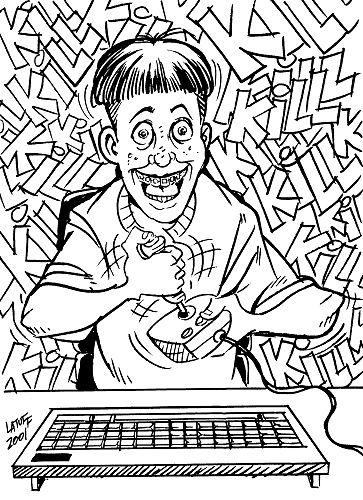Social learning is the idea that society imitates behavior they see in the media, reflecting the effects that media has on society. Theorists concentrate on the violence, drug use, and sex shown in media of which young girls and boys are exposed to and tend to imitate. This imitation at a young age progresses as they grow up, and consequently they develop certain traits and characteristics as a reflection of the media. The textbook and Tough Guise show many examples of the effects of social learning on society.
Experiments explained in the textbook and examples in the movie, Tough Guise, help me understand the concept of social learning and its effects on the relationship between media and society.
The first example comes from the textbook. Albert Bandura conducted a media effects experiment that reflected process of social learning in media. He showed preschoolers a short film in which an actor behaved aggressively toward a Bobo doll, punching it, hitting it with a mallet, kicking it around, and throwing balls at it. Although all the children saw the same film, there were three alternate endings, and the children were randomly divided into three groups, each of which saw a different ending. In one ending, an adult actor praised and awarded the child actor for his/her behavior. In another, the adult actor scolded and spanked the child actor, and in the third, only the opening sequence was shown. After the screening, the children were taken to a room with the Bobo dolls, and the props from the film. The results showed that children who had seen only the opening sequence or the on which the child was praised imitated the aggression that they had seen, as opposed to the children who had seen the actor get punished, who tended not to do so. This experiment represents social learning, because the children had specifically imitated the aggressive behaviors they had seen in the film. Even some of the children who had seen the actor get punished for his behavior imitated the violent acts shown.
The textbook provides many more examples of social learning in its analysis of media impacts. For instance, it declares that experimental studies show that children imitate the violence they see, predisposing them to choose violent resolutions to conflicts in their daily lives. Furthermore, the textbook states that adolescents who watch a lot of television sex are more likely to engage in sexual intercourse within the year following their exposure.
Tough Guise had many examples of social learning, the main one being, men in society imitating the masculinity and violence they see in the media. The movie showed pictures of men posing as gangsters, holding weapons and/or showing off their muscles, imitating the tough men of the slums who gain power through their violence.
These examples gave me a clear understanding of the concept of social learning and how it affects society. It also opened me up to an aspect of the relationship between media and society, emphasizing the powerful influence media has on society. The products of media have obvious influence on young kids and even adults. The imitation in social learning affects how individuals will behave and thus how society will behave as a whole. It's power over the young individuals gives media a hand in society's future as they young kids grow up. Social learning represents the easily adaptable society and its compliance to the media.


No comments:
Post a Comment